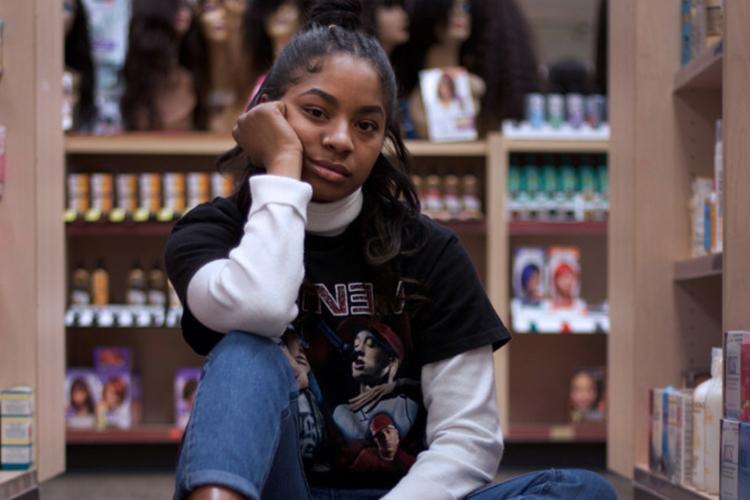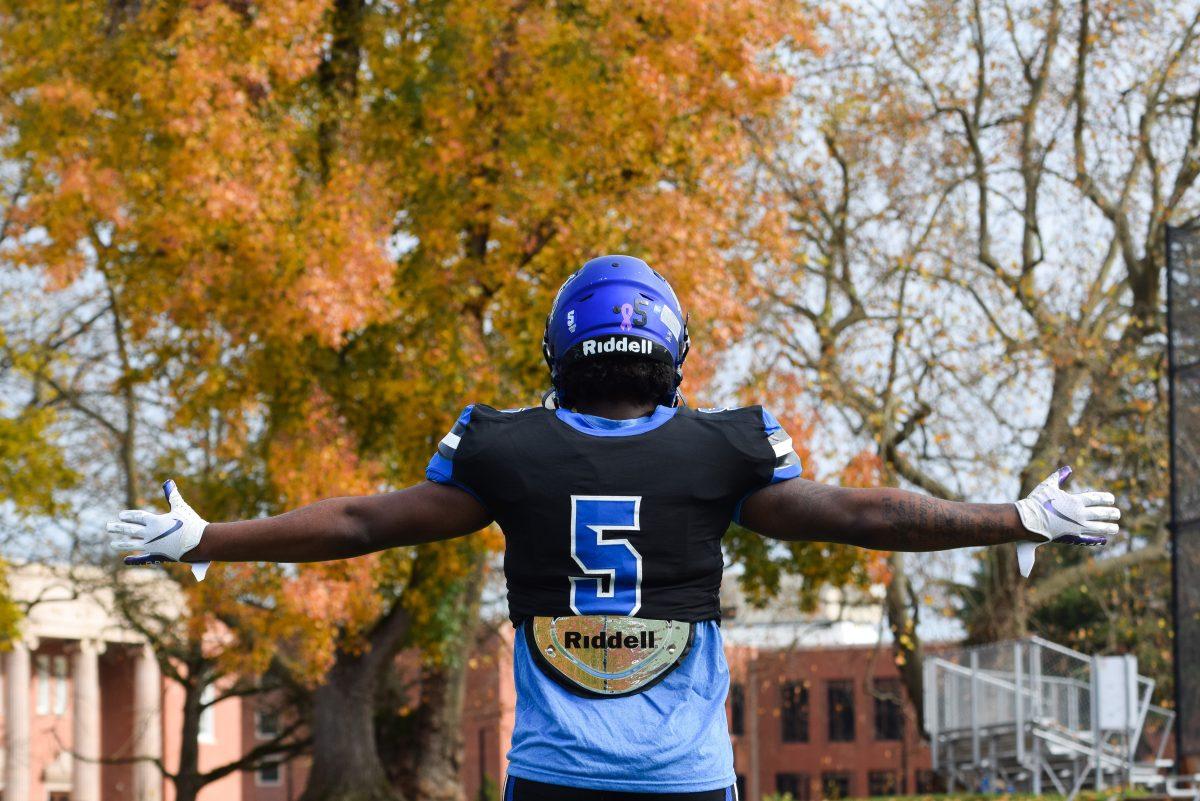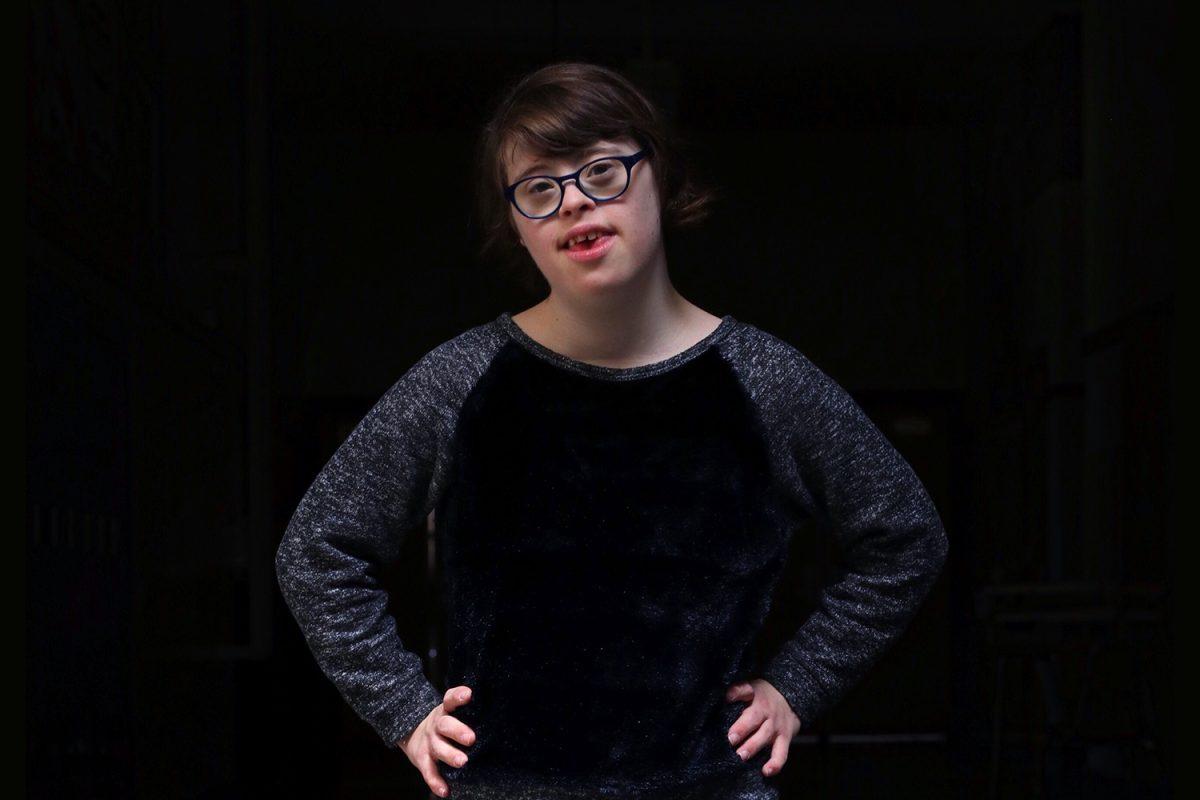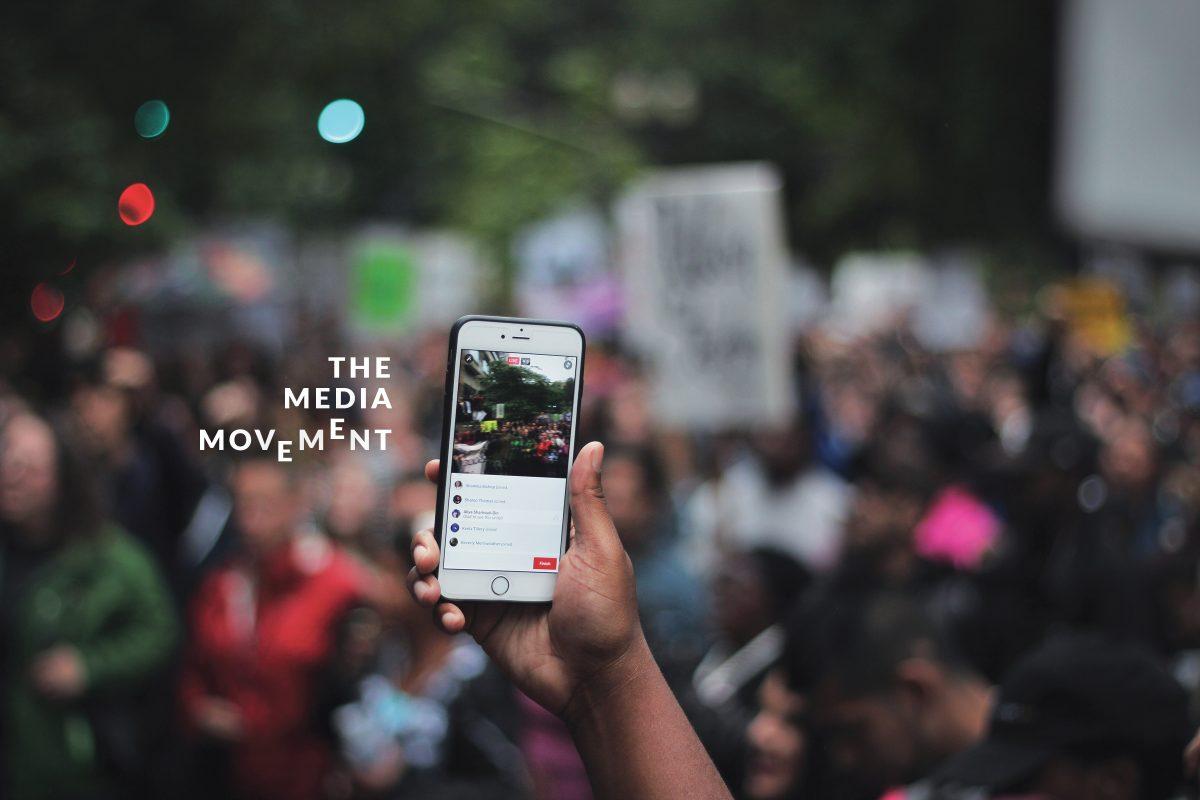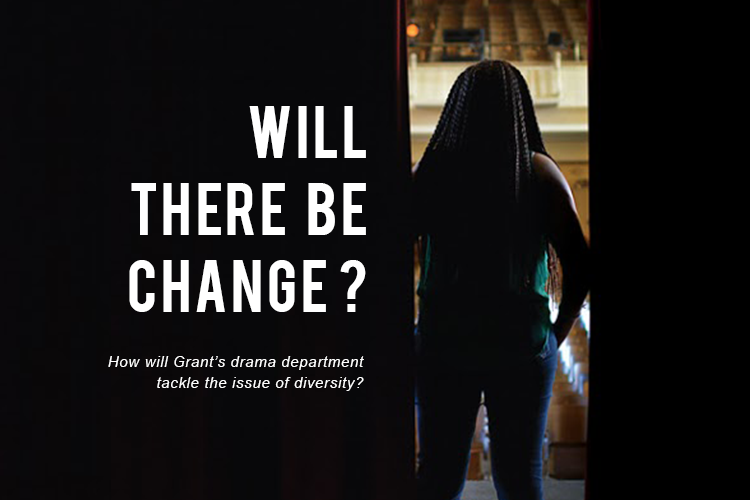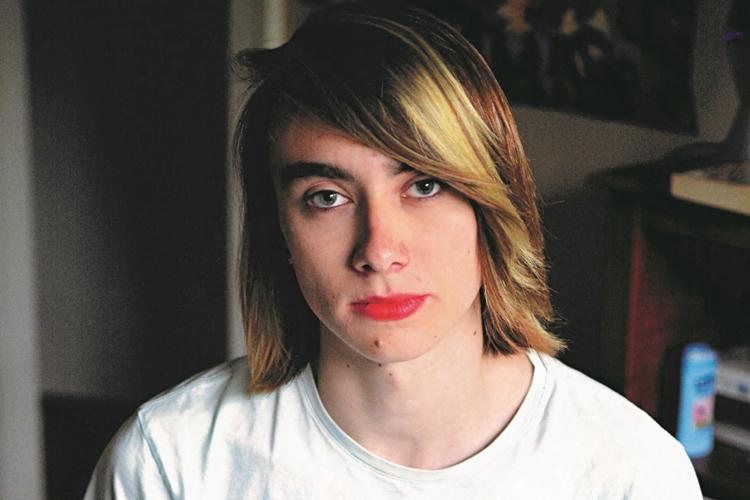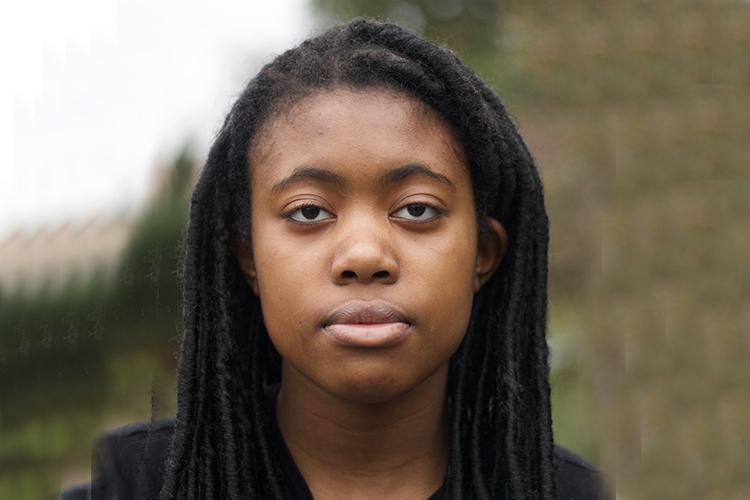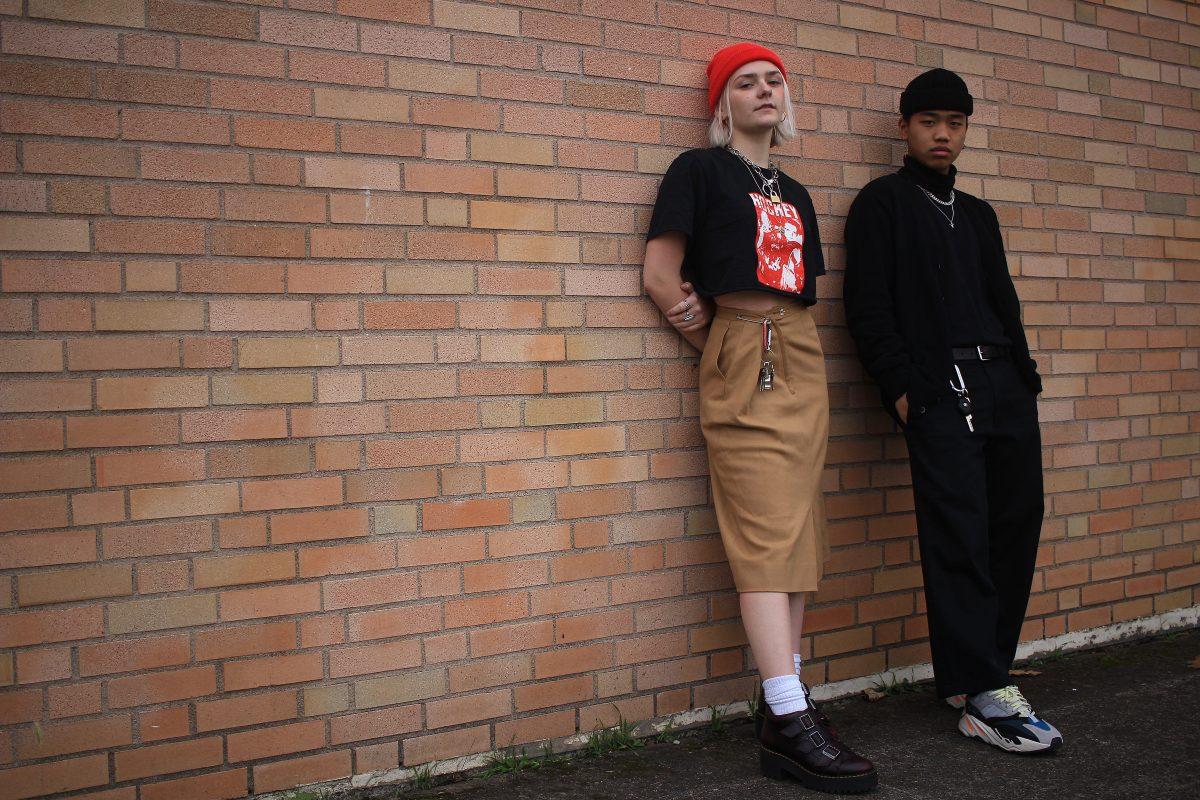With two bobby pins, the hold was futile — just a few seconds, and senior Jaime Fields’s three feet of hair had fallen back to its free state. Ten bobby pins later and some form had taken shape, but it was one resembling a nest-like style that was far from the bun that she desired. Even with 20 haphazardly placed pins, it was a natural physics conundrum; her hair moved in every direction.
After much experimentation, Fields was considering giving in to her hair’s protest. But with one final trial, a solution was found. With a few hair ties, Fields hoisted her hair onto her head and molded it into a bun, balancing her hair on a Dixon Ticonderoga pencil.
Hair is a major part of appearance, as it is one of the first things people notice when looking at someone. Because of this, hair can have a significant role in identity.
Although hair is commonly pushed aside as something solely physical, it often holds a much deeper meaning. Hair maintenance and styles that are specific to people of color can provide an important outlet for cultural identity and tradition. These hairstyles are often co-opted by people who are not associated with the culture, a problem known as cultural appropriation. While cultural appropriation is especially common amongst celebrities, with figures like Khloe Kardashian wearing bantu knots – a traditionally African hairstyle – in August of 2016, the Grant community is by no means immune to the problem. In the fall of 2016, the Grant women’s soccer team faced backlash from the Grant community when it was discovered that the players — many of whom were white — were planning to get cornrows in their hair.
Because hair presents itself in varying shapes, sizes and hues, schools will sometimes prohibit specific hairstyles, often those worn by people of color. At Mystic Valley Regional Charter school in Massachusetts, two Black girls were given detention and suspended from school activities for wearing braids with extensions. The school had a policy that prohibited hair extensions and hair coloring, directly targeting Black students. School districts throughout Oregon also have specific dress and appearance codes, with Beaverton School Districts instructing parents to watch for “drastic changes in hair or dress style” as indications of student gang affiliation.
But at Grant, students are given the freedom to cut and style their hair as they choose. Although the Grant Student Handbook provides some rules regarding the clothing and appearance of students, almost all of the named restrictions focus on clothing that endangers “the health or safety of any other person.” Unlike other school districts throughout the state of Oregon, Portland Public Schools recognizes the importance of allowing high schoolers the freedom to represent themselves. There are truly no rules when it comes to hair at Grant, and students use this to their advantage.
Whether through color or style, hair is a mode of self-expression. At Grant, students throughout the school use their hair as an extension of their personality. “It’s one of the first things people look at, so it’s a good way to represent yourself and invoke emotions in yourself and other people,” says Tristan Leissler, a junior at Grant High School.
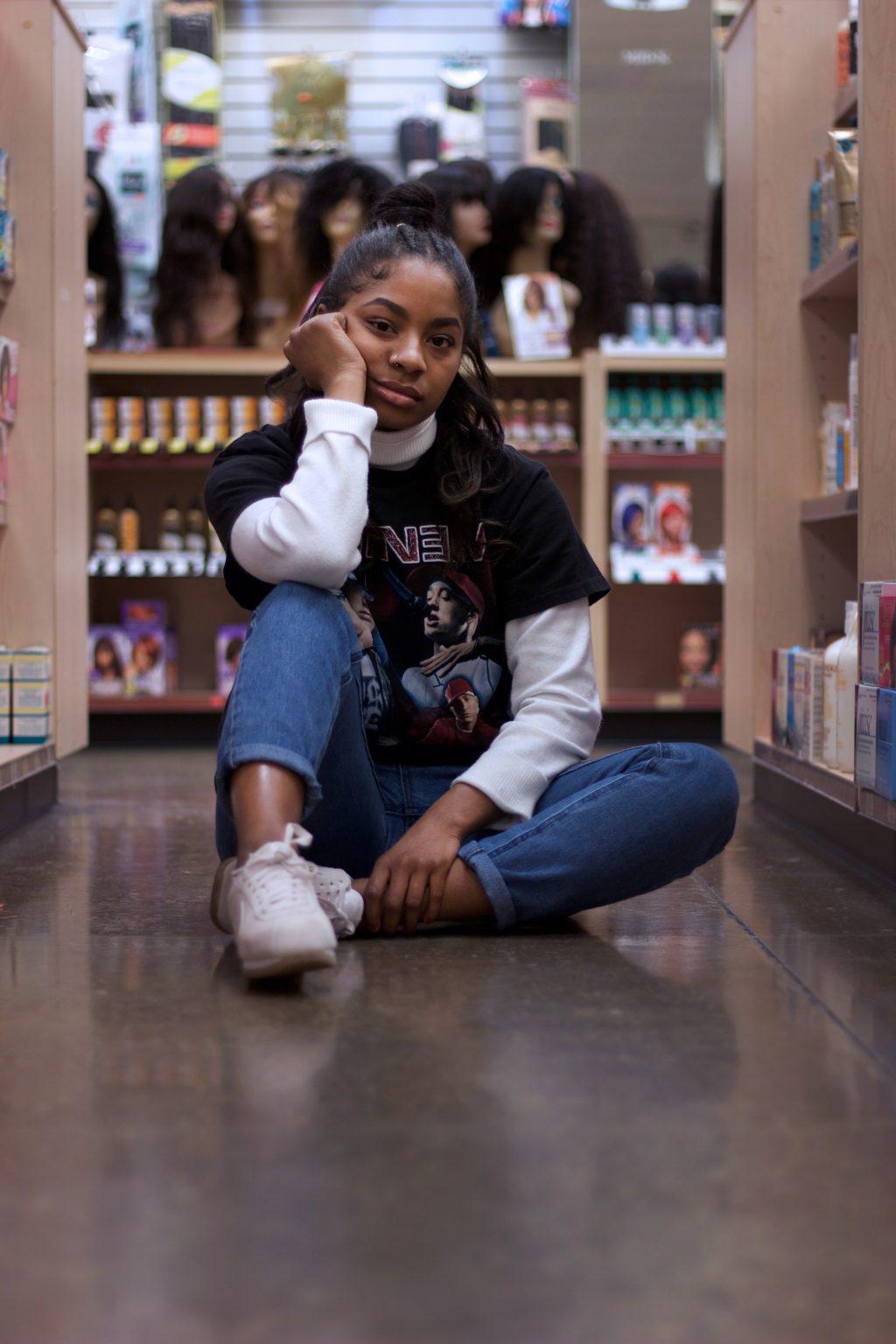
Jade Rice
Junior She/Her
This interview has been condensed for clarity.
Do you think your hair is a big part of your identity?
For sure. That’s like the number one thing, I feel like, for me. It’s different for everybody … It’s different because like somebody can have straight hair and then they like to express (themself) with their outfits and stuff like that. But for me personally, I like to express myself with my hair.
I would say it keeps me being unique I guess. ‘Cause I feel like nobody else has this certain hairstyle that I have at this school … or like, ‘Oh the girl with … the braids or with the gold in her hair.’ Like, that’s kind of a description of how people describe me I guess. That’s how people know me I guess — my hair, if anything. I like how I can switch it up and not just (have) the same hairstyle all the time.
How often do you get your hair done?
Well my mom does my hair whenever she’s not busy and I would see an idea, a hairstyle like on Instagram or social media and I will tell her, you know, if you can do this or not, she’ll like, do her best and it actually turns out really good and looks really good.
I guess I get my hair done like a lot actually. If not once a week, every two weeks I get it (done) differently. Or like get a style that I had before, something like our braids or anything that I kind of really like. And my mom doesn’t do hair for a living. She just knows how to do (it). That comes in handy; whenever she can, she’ll like come through.
Is hair a part of your family community and identity?
Yeah. I mean, it’s my culture here, you feel me for the culture … (Our hair) goes all the way back to, you know, ancestors. We kind of take styles from, honestly, like a lot of other places and stuff like that. Like when I took a style, I don’t know what it’s exactly called, but I guess they’re called like “lemonade braids.” And like I took a style and one of them was like those, a braid going straight back, like in the middle. It means that you’re like, oh, a woman now or like you’re single.
Do you think hair means something more than what it is physically?
It can in a way like, so if someone wants to touch my hair, it’ll be a different thing. Yeah, and like it would be more personal and like, you know, people know not to touch my hair. Like I don’t want you to touch my hair. That’s like something personal. Like, honestly, people wouldn’t like you to just touch them, out of nowhere. So like don’t come up to me like, ‘Hey, can I touch your hair?’ Like it’s more of a physical thing I get. Or like a personal thing.
What have been your experiences with cultural appropriation?
When I first think about it, I honestly think about hair. And like, I think about braids and stuff like that. There’s a difference if you appreciate another culture and you want to actually express the culture and like, you know, you have your hair in braids but don’t like hair in braids, but don’t make it as your own and don’t try to act a certain way. When you have that style … for like Halloween, I think that that’s similar, like if you’re going to have a costume. Honestly, I still don’t like people when people wear costumes, like a cultural costume for Halloween. If you’re going to have that, don’t act a certain way. Like actually appreciate and know what you’re wearing. And that’s the same thing with hair. I feel like, don’t just have — they call it cornrows, I call it braids — but yeah. Don’t just have braids and just act a certain way.
Do you think you use your hair a lot for your expression?
It’s just something that I can (use to) express myself and yeah, it’s just like more going to the roots of where we came from, like, me as a Black person, you know, like Africa … They used to wear braids and all this extra stuff. I can wear my hair and sometimes I’ll love to wear my hair natural, like an afro, or how it naturally is.
Not really intentionally, I guess. Like it’s not really like, ‘Oh, I’m making a statement. This is what I’m standing for.’ It’s just like, it adds to myself … It’s just a part of who I am and I like to switch it up a lot.‘Cause who likes boring hair?

Jaime Fields
Senior She/Her
This interview has been condensed for clarity.
Tell me a bit about your hairstyle.
Well, I have three feet of hair, and I never really consciously decided to grow it out. I just sort of let it keep growing and then it just sort of became part of my identity. Like, ‘Oh yeah, that’s the girl with the long hair,’ and that’s how people refer to me when they don’t know my name, is ‘the girl with the long hair.’ And then now it’s just sort of become my identifying trait. And also sort of a conversation starter. Like, I’m in a big choir that performs downtown and it’s got about 300 people. But some older ladies will come up and be like, ‘Oh, I always watch your hair when you were performing.’ We’ll start a conversation, and that’s how I meet people.
I suppose it’s been a while since it passed that point where people started noticing it, you know … and like since then, it’s just become a part of me. Like how I perceive myself is definitely affected by my hair. I’m very self conscious of it because when it’s this long, I know people pay attention to it. It’s just one of those things, I guess, where I might feel like a different person if I cut it.
What is it like, maintaining three-foot-long hair?
It takes a while to shampoo and condition it. And like if I don’t have the right water pressure, it takes forever to rinse out. But it’s not that difficult. Just brush it I guess. Same as any other hair.
What is your plan for your hair in the future? Do you plan to continue to grow it out?
I’ve never cut it short, ever. Like I trim it every couple of months or whatever, but I’ve never had it short. I’ve always wondered what it’d be like if I cut it really short and just came to school and shocked everybody. But for right now, I’m just planning on keeping it long because I’ve had it this long for so long. It takes a while to grow it to this length.
When do you decide to cut your hair? Do you do it yourself?
Yes, to keep it healthy. I used to go to like a normal hair trimmer or whatever, but then after it gets to this length I can just pull my hair out in front of me and trim it myself, and I might as well save five dollars and do it myself.
What is it like meeting somebody new, having your hair this way?
Well, sometimes it’s nice, like it’s a conversation starter, like somebody will say, ‘Oh, I like your hair,’ and then we’re having a conversation. Other times it’s kind of weird, like men will approach me on the street. And like one guy I remember in particular was like, ‘Oh, you have long blonde hair. Do you have blue eyes too?’ And I was like, ‘Yeah.’ And he said, ‘Oh, that’s what my baby mama had. You look just like my baby mom.’ I don’t want to be told that I look like a woman you once had sex with, that’s uncomfortable. And I remember an old lady once yelled at me from the top of an escalator like, ‘Hey, how long is your hair?’ And like stuff like that. It’s kind of fun, but then other times it gets kind of weird and creepy.
You mentioned hairstyles being a way to perceive others. How does that apply to you?
I think, well, people out in public definitely talk to me more because my hair, like it’s the first thing that they notice about me. Nobody has ever stopped me on the street about anything else. It’s always about the hair because it’s not normal for somebody to have this much. When I was younger, I used to wear it braided all the time, but then like, I sort of let my hair down and it’s more freeing, I guess. Sort of like, “This is who I am, and this is what I want to do with my hair.”
Is there anything else that you want to add?
I think hair is more important than people realize it is. People use it as a form of self-expression. And then also, I’m doing my senior thesis on how a woman’s hair affects her perception of herself and the way society perceives her. And so the way hair is used as a tool to discriminate against others, like in the case of African-American women being told that they have to wear their hair a certain way, or in the case of Muslim women being shamed for covering their hair, or facing Islamophobia, or even just women growing older and having their hair go gray. And feeling the need to conform to societal pressures … But then I think also hair is a wonderful tool for expressing yourself and how you want to be seen by the world.
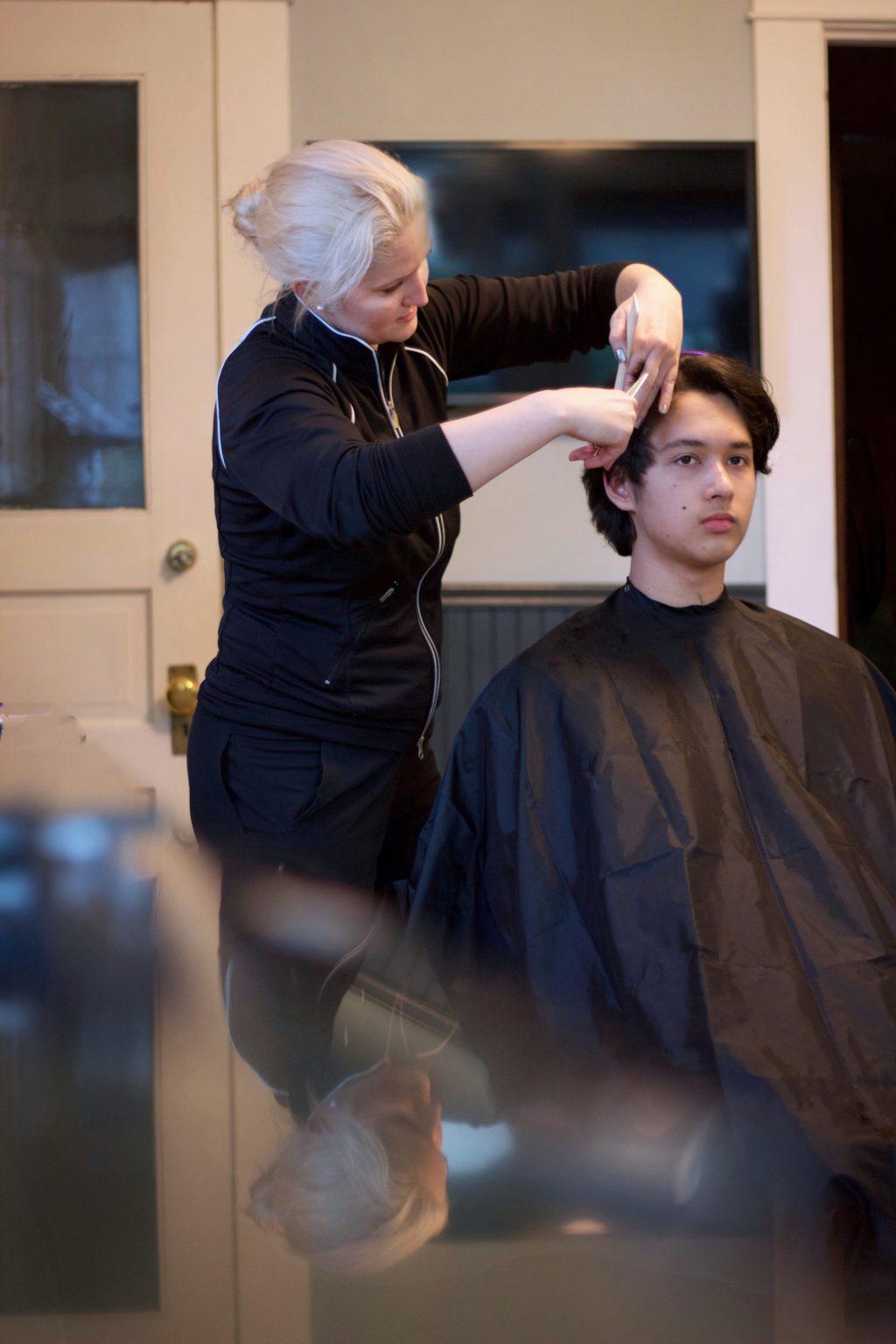
Tristan Leissler
Junior He/Him
Lyudmila Leissler (Tristan’s mother)
She/Her
This interview has been condensed for clarity.
Tell me about the tradition of your mother cutting your hair.
TL: So all my life I’ve gotten my hair cut by my mom. It’s great because we can get it done at home. And it’s free so you don’t have to go anywhere to get it. She knows how my hair works, and what might work better, and I can have some advice. Recently, I actually went to the barber for the first time and got my hair cut two times. So I’ve only ever been to a barber twice. And I kind of seek some advice or opinion, like what they think my hair would look good with. It’s kind of hard because (barbers) don’t really give their opinion, they more go with what you say … but here I don’t really think about having something specific, we’re just kind of talking about it. And we both know what would look good, or what we’re talking about. So it’s just more convenient I guess.
When did the tradition start?
LL: It started from my mom. She’s been cutting our hair when we were kids, and she still cuts my dad’s hair and they’ve been together for 40 years. And I think that it comes from her and also the cultural background. I’m Russian so you do a lot of things yourself. You try a lot of things yourself rather than going to someone and paying someone, and if you have a skill it’s best to do it at home by your family rather than getting it done by a stranger … Because we can collaborate, we can look at ideas. I’m not rushing, I’m taking my time. And it’s always great conversations you can have with your family as you’re doing it.
Has the bond between you two been influenced at all by this tradition?
LL: I think Tristan feels like there’s trust. He’s a perfectionist. I’m a perfectionist myself, I’m very detail-oriented. And he feels like he can trust me, and the more I’ve been doing this over the years, he knows that he doesn’t have to worry about what’s going to happen. And then, while we’re having a haircut we can have really interesting conversations and it can bring us a little bit closer together. To catch up on what he might be interested in life, or what he’s done for the day or you know what happened during the day. So it’s really interesting to connect, and it gives us that private time.
TL: We don’t often eat dinner together … Traditionally, families eat dinner or like cook dinner or whatever, or eat dinner at a table together. Sometimes we do, especially if it’s like a holiday. But we’re not always having designated time to talk about things. And haircuts can sometimes last a while. It’s just a stretch of time where you get the chance to talk about things.
Lyudmila, what have you noticed about Tristan’s hair as you’ve been cutting it?
LL: He puts thought into it. Not just about the care, but what would look great and the style, or how it’s gonna affect his daily life or routine. And it’s always been kinda fun to just work with that, because it’s not just about having a regular haircut. It’s about, ‘What can we do today? Do you want to change it up? How do you feel at that moment in time?’ It makes it fun for me too, to cut his hair … because he’s open to ideas and he’s not afraid to take a risk. We’re being artists, trying to create something that works. And he wants to have individuality, so it doesn’t have to be copied necessarily. He doesn’t follow the trend, so if half the school has the same hair, he likes to do his own thing, he likes to be unique.
TL: But I also don’t want to … So many people will try too hard to be unique that everyone ends up doing the same thing, so it’s not unique. But for people, (hairstyles) are so popular, that it ends up not being unique even if people consider it unique.
Lyudmila, as a Russian, what is it like cutting Tristan’s hair, who is part Filipino?
LL: I mean Filipino culture, they too are very connected to their family, they’re very close to their family so they like to share and do things that are kind of family-oriented, and kinda help each other out in any way they can … Tristan’s background on his dad’s side is Filipino and German … His hair is just thicker, it’s coarse, it’s harder to cut. I think that, culturally, there’s also some bond that creates there as well. It’s not the same as you would be hearing in the United States and be giving each other haircuts … It’s much deeper. They’re very proud that it’s done by their own family member. And they feel like they can take pride like, ‘Hey it’s me, I’ve made a mark on a family member. We did something together and I was able to help out.’ It makes them feel good. They were able to contribute and help out, and the Filipinos and the Russians are kind of similar in that way.





























